45+ Mental health games and activities for workplace to thrive in 2024
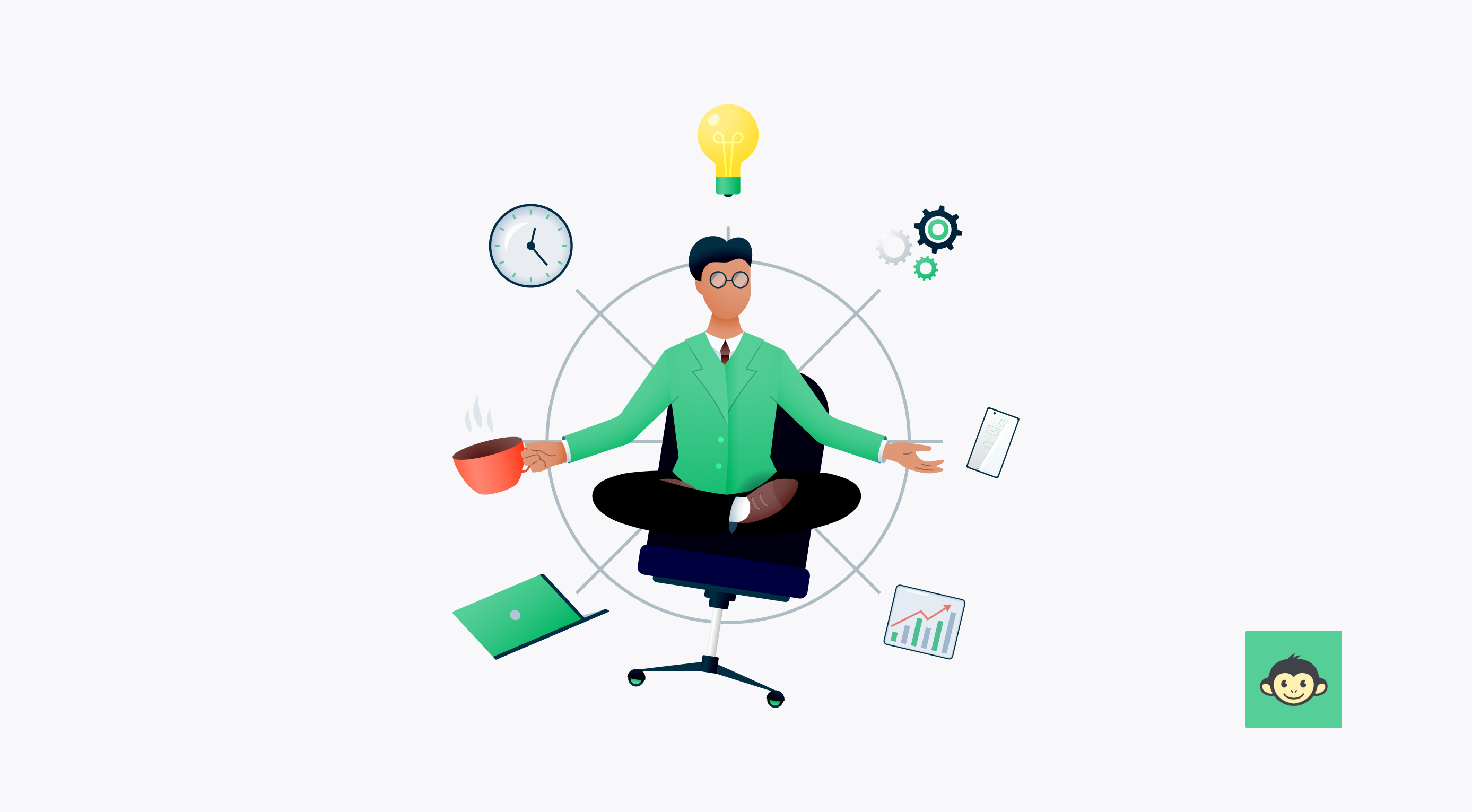
In today's hustle-centric world, taking care of your mental well-being at work is a bit like Mario collecting power-ups to tackle those tricky levels - absolutely essential! As the great philosopher Unknown once said, "Life is like a game of cards; the hand you are dealt is determinism, the way you play it is free will." Well, the same goes for your work life.
You might be dealt a demanding project, tight deadlines, and a boss who thinks they're Sherlock Holmes, but how you play this game is entirely up to you. And that's where mental health games and activities come into play – they're your secret power-up to ace the game of office life!
In this blog, we'll be your trusty game guides on this adventure, showing you how to transform your workplace into a mental health oasis with a sprinkle of fun, a dash of camaraderie, and a generous helping of productivity.
Blog Highlights


What are mental activities for employees?
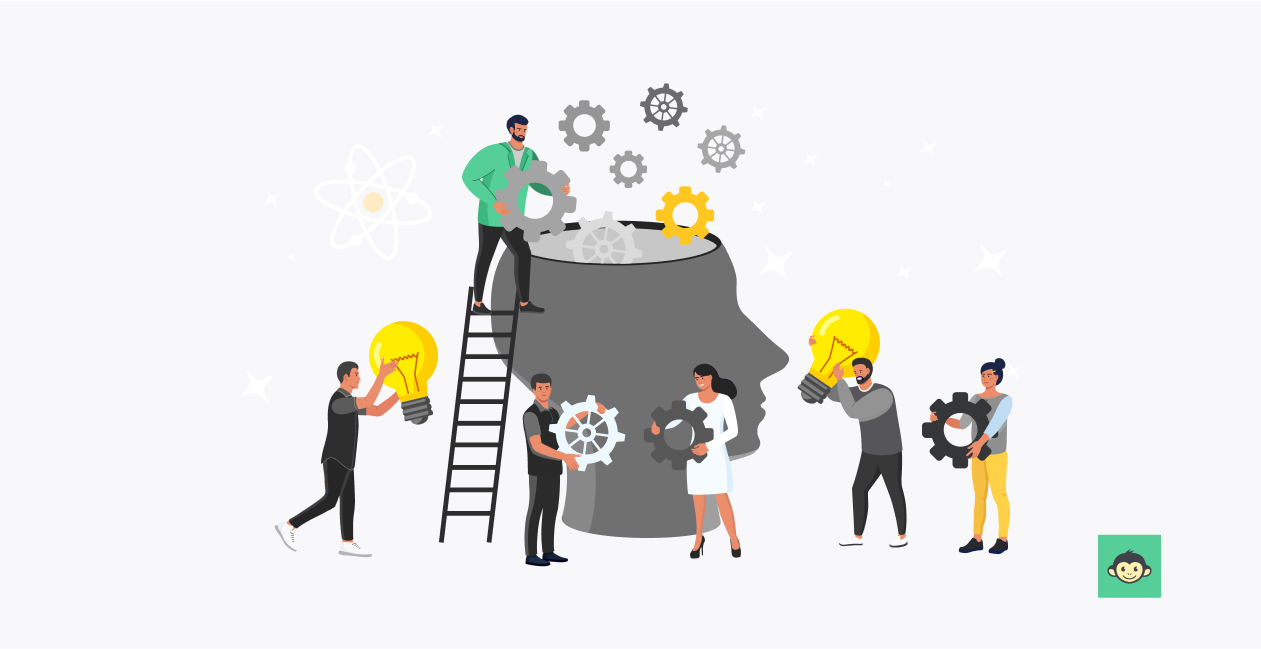
Mental activities for employees encompass a range of engaging and stimulating exercises designed to promote positive mental health, well-being, and productivity in the workplace. These activities can include mindfulness practices, problem-solving tasks, creative exercises, and emotional intelligence-building exercises.
These activities serve as a means to boost cognitive functions, reduce stress, enhance creativity, foster team collaboration, and improve overall mental and physical health among employees.
By incorporating such activities into the workplace, organizations can create a more positive and productive atmosphere and boost engagement while supporting their employees' mental and emotional needs.
Importance of proper mental health for employees in the workplace
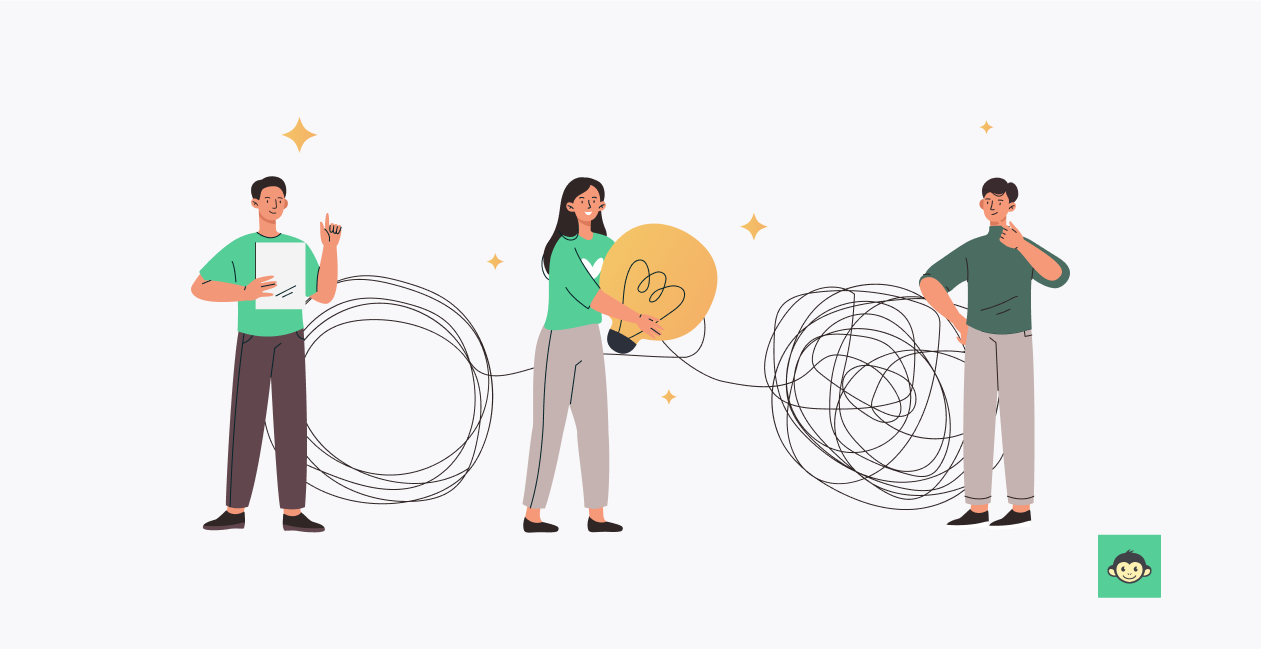
Proper mental health for employees in the workplace is paramount, as it profoundly impacts both individual well-being and the organization's overall success. Here are some key reasons why prioritizing mental health in the workplace is essential:
Enhanced productivity
Employees with good mental health tend to be more focused, motivated, and productive. They can better handle tasks and are less likely to be distracted by stress or emotional issues.
Reduced absenteeism
Good mental health reduces the likelihood of absenteeism due to stress-related illnesses, burnout, or mental health concerns. This translates to fewer disruptions and higher continuity in the workplace.
Improved creativity and problem-solving
Mental well-being fosters creativity and better problem-solving abilities. Employees are more likely to think outside the box and come up with innovative solutions when their minds are at ease.
Stronger employee engagement
Employees who feel supported in their mental health are more engaged with their work. They exhibit greater commitment, job satisfaction, and loyalty to their organization.
Enhanced interpersonal relationships
Good mental health enables employees to build and maintain positive relationships with coworkers, leading to better teamwork, collaboration, and a harmonious workplace atmosphere.
Lower turnover rates
Organizations that prioritize employee mental health tend to have lower turnover rates. Employees are more likely to stay with a company that values their well-being, saving recruitment and training costs.
Positive company culture
Promoting mental health creates a positive and caring company culture. This, in turn, attracts top talent and fosters a workplace where employees are more likely to thrive.
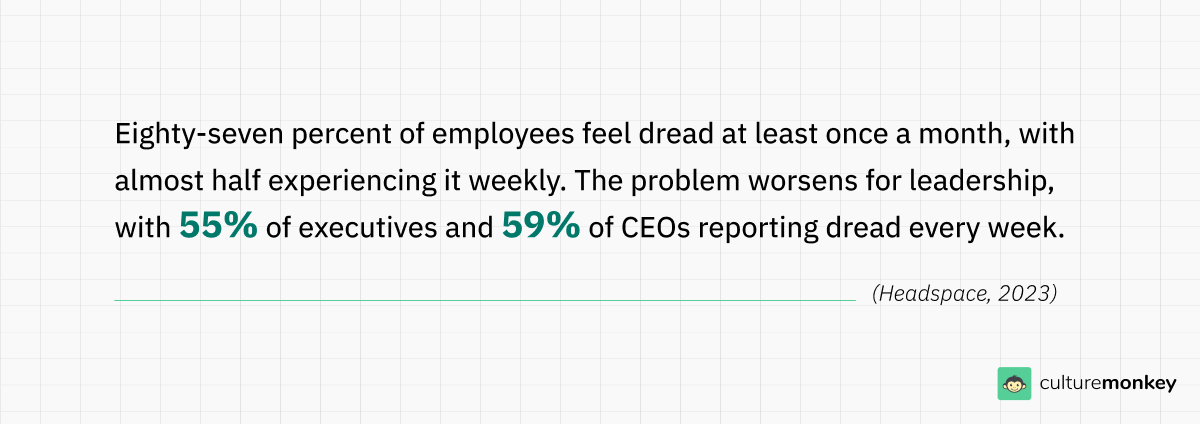
Improved work-life balance
A crucial aspect of proper mental health is achieving a balance between work and personal life. Employees who can manage their workloads effectively while also enjoying personal time experience reduced stress levels.
Enhanced resilience
Mental health resilience is a key factor in navigating challenges and setbacks. Employees with strong mental resilience can bounce back more effectively from work-related stressors or unforeseen difficulties.
Greater employee satisfaction
A positive correlation exists between good mental health and overall job satisfaction. When employees experience a sense of well-being, they are more likely to find fulfillment in their roles.
Effective stress management programs
Implementing effective stress management programs in the workplace is a proactive approach to supporting employees' mental health. These programs can include mindfulness sessions, stress reduction workshops, and access to mental health resources.
What are the 4 A's of a mental health-friendly workplace?
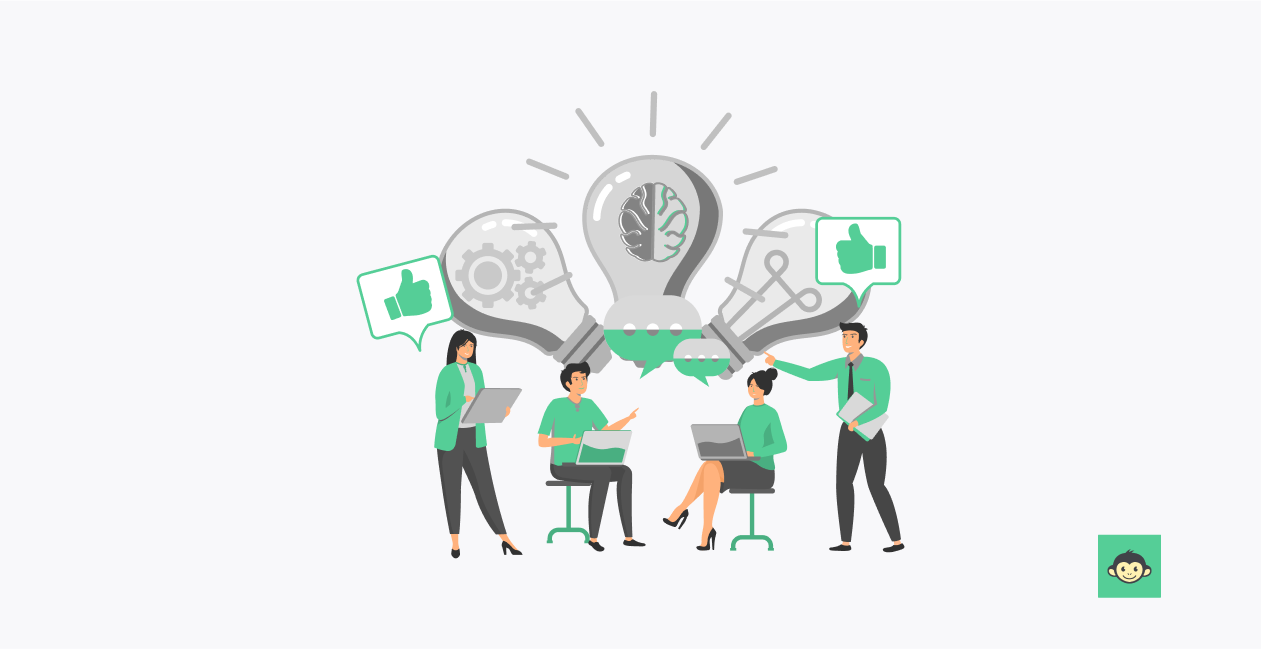
The 4 A's of a mental health-friendly workplace are a framework that highlights key elements organizations can focus on to create an environment that supports employees' mental health. These 4 A's are:
1) Awareness
- Understanding: Employers and employees should have a deep understanding of mental health, including common issues like stress, anxiety, depression, and burnout.
- Education: Offering mental health education and training programs helps raise awareness and reduce stigma. Employees should be able to recognize signs of mental health challenges in themselves and their colleagues.
2) Access
- Support services: Providing access to mental health support services, such as Employee Assistance Programs (EAPs) or counseling services, ensures that employees can seek help when needed.
- Flexible policies: Implementing policies that accommodate employees' mental health needs, such as flexible work hours or remote work options, helps create a supportive work environment.
3) Assistance
- Peer support networks: Encouraging the development of peer support networks or mentorship programs can help employees feel more comfortable discussing their mental health concerns.
- Management training: Training managers and supervisors in recognizing and addressing mental health issues allow for early intervention and support.
4) Action
- Stigma reduction: Taking active steps to reduce the stigma associated with mental health challenges creates an atmosphere where employees feel safe discussing their concerns.
- Promoting work-life balance: Encouraging a healthy work-life balance, setting realistic work expectations, and providing opportunities for breaks and relaxation are essential actions.
- Regular check-ins: Regularly checking in with employees, formally through performance reviews and informally through one-on-one meetings, helps proactively identify and address issues.
What helps to improve employees’ mental health?

These four pillars lay a strong foundation for creating a workplace that prioritizes and enhances employees' mental health.
1) Mental health support services
Employee Assistance Programs (EAPs) play a vital role in improving employees' mental health. These programs offer confidential counseling and support services, making it easier for employees to seek help for personal or work-related challenges, including mental health issues.
Additionally, providing access to mental health professionals, such as psychologists or counselors, directly connects employees with the expertise they need.
Comprehensive mental health screening tools and insurance plans that cover mental health treatments, including therapy and medication, further remove financial barriers to seeking care.
2) Work-life balance and flexibility
Promoting work-life balance is essential for mental health improvement. Offering flexible work arrangements, such as flexible work hours or remote work options, empowers employees to manage their professional and personal lives better, ultimately reducing stress.
Employers who provide ample paid time off (PTO), including vacation days, sick leave, and mental health days, allow employees to take the necessary breaks to recharge and address their mental well-being.
Encouraging clear boundaries between work and personal time also prevents burnout and enables employees to disconnect from work-related stressors when needed.
3) Mental health awareness and training
Mental health awareness and training programs are effective tools for supporting employees. By offering workshops, seminars, or training sessions on mental health topics, organizations help employees recognize signs of mental health challenges, reduce stigma, and acquire coping strategies. Plus, managerial training is essential.
When managers are trained to identify and address mental health concerns and foster open and supportive communication, it contributes significantly to creating a mentally healthy workplace. Promoting peer support and employee resource groups can also provide a sense of belonging and emotional support within the organization.
4) Wellness programs and physical activity
Wellness programs and physical activity initiatives contribute to improved mental health. Encouraging employees to engage in regular physical exercise and providing on-site fitness facilities or wellness classes can positively impact both physical and mental well-being.
Promoting healthy eating options and offering nutritional resources is another aspect of wellness that supports employees' overall health. Stress-reduction activities such as yoga, mindfulness sessions, or meditation can be integrated into workplace wellness programs, helping employees manage stress and anxiety effectively.
The role of virtual employee wellness in the workplace
Virtual employee wellness programs have become a critical tool for promoting mental health in today’s remote-first work environment. These programs provide flexibility and access to diverse resources, allowing individuals to manage their health effectively.
According to a study by Buffer, 23% of remote workers cite loneliness as a significant challenge, highlighting the importance of such initiatives. Here are some key benefits of virtual employee wellness programs:
- Personalized wellness: IIndividuals can choose activities that fit their health needs, like fitness or mental health support. 73% of workers believe flexible wellness options are crucial for engagement, highlighting the need for tailored, accessible programs.
- Convenience: Participants can engage in wellness programs from home, making it easier to incorporate well-being into daily routines without the need for commuting or attending in-person sessions.
- Privacy and comfort: Virtual health and wellbeing activities provide access to mental health or fitness resources in a private, comfortable setting. According to a report by Charlie Health, 82% of participants stated that virtual wellness services met their needs better than in-person visits, underscoring the importance of comfort
- Work-life integration: Virtual programs offer flexibility, allowing seamless integration of emotional wellness activities into the day, promoting a better balance between work and personal life.
- Wider resource access: Participants gain access to a broader range of wellness resources, from mental health apps to global support networks, ensuring options that suit individual preferences.
What do employees want in a wellness program?
A successful wellness program is no longer a one-size-fits-all solution. Employees today expect programs that are tailored to their individual needs and accessible in various formats.

Download our Wellness Games Checklist to kickstart a healthier and more engaged office today.
To create a program that truly resonates, employers must focus on flexibility, mental health support, and work-life balance. Here’s what employees prioritize in a wellness program:
- Personalization: Employees want programs that cater to their unique needs, such as mental health support or physical wellness activities. As per a report by Wellable, 59% of respondents identified personalization as a top priority for mental health initiatives, highlighting the importance of tailored wellness solutions in improving participation.
- Accessibility: Employees need wellness games and activities that are easy to access, whether through virtual platforms or in-person options. Providing flexible delivery ensures everyone can participate, regardless of location or schedule.
- Proactive mental health support: Employees expect regular resources to manage stress and build mental resilience. This could include webinars, workshops, or access to professional counseling services.
- Actionable benefits: Wellness stipends for activities like fitness classes or mindfulness apps are highly valued. These benefits show that the company is serious about supporting employee well-being beyond the workplace.
- Work-life balance: Flexible work schedules and remote options help employees avoid burnout while maintaining productivity. Ensuring a healthy balance between work and personal life is crucial for long-term employee satisfaction.
Top reasons workplace mental health initiatives fail and how to avoid them
Workplace mental health initiatives often fail due to poor implementation and lack of long-term commitment. While many companies have good intentions, they struggle to create programs that are sustainable and truly impactful.
For instance, although companies may invest as much as $238 per employee annually on wellness programs but without addressing the root causes of failure, these initiatives can lose momentum and fail to support employees effectively.
Common reasons for failure include:
- Lack of leadership support: Without active leadership involvement, mental health initiatives often lose effectiveness. While many companies claim mental health is important, only 50% of employers report it as a top organizational focus, according to McKinsey
- One-size-fits-all approach: A generic wellness program that doesn’t cater to the diverse needs of employees can alienate parts of the workforce.
- Lack of follow-through: Programs that start strong but don’t offer consistent support or ongoing resources tend to fizzle out.
- Stigma around mental health: If mental health is not openly discussed, employees may feel uncomfortable engaging with these programs.In fact, studies show that 8 out of 10 workers avoid talking about mental health at work due to shame or stigma.
- Failure to measure impact: Without tracking progress or outcomes, it’s difficult to know if the initiative is working or how to improve it. Nearly 60% of organizations don’t track the ROI for mental health initiatives, limiting their ability to refine wellness strategies and ensure effective results
Why do we need mental health awareness in the workplace?
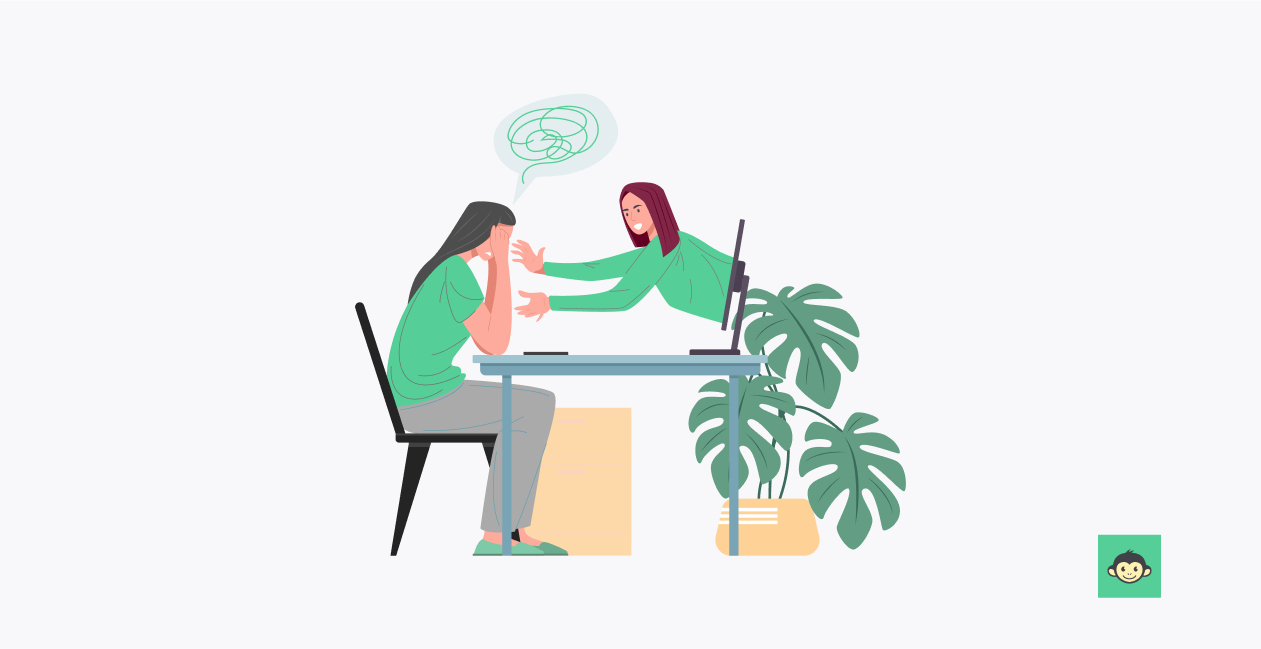
Mental health awareness in the workplace is indispensable for several compelling reasons. Firstly, it promotes a culture of empathy and understanding, breaking down the stigma associated with mental health challenges. This shift enables employees to openly discuss their concerns and seek help when needed, creating a more compassionate and supportive environment.
Mental health awareness also leads to early intervention. When employees and managers are educated about the signs of mental health issues, they can identify and address them promptly. This proactive approach can prevent minor concerns from escalating into more severe problems, ultimately reducing absenteeism and increasing overall productivity.
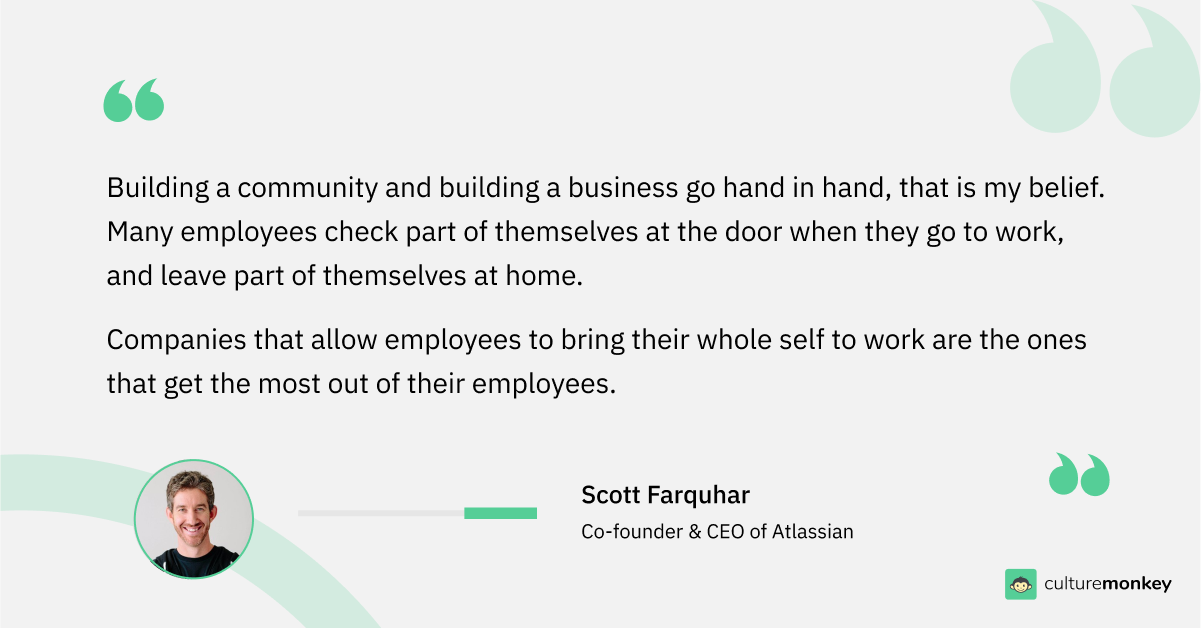
Moreover, a workplace that values mental health attracts and retains top talent. Job seekers are increasingly looking for organizations that prioritize employee well-being, including mental wellness and health support. This enhances the company's reputation and reduces recruitment and training costs.
And most importantly, a mentally healthy workforce is a more engaged and productive one. Employees who feel supported in their mental well-being are better equipped to manage stress, remain focused on tasks, and contribute effectively to the organization's success.
How do I create a mental health program effectively?
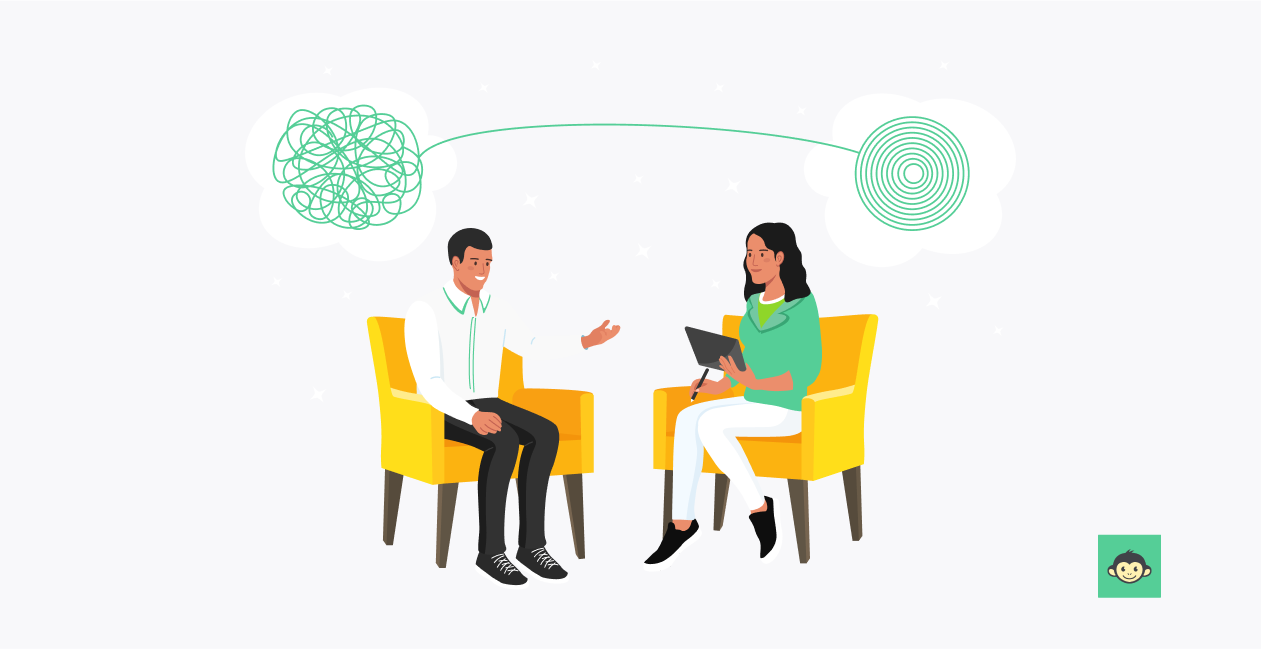
Creating an effective mental health program for your organization requires careful planning and thoughtful implementation. Here are the key steps to create a successful mental health program:
1) Assess needs and objectives:
- Begin by conducting a comprehensive assessment of your organization's needs and goals. Consider factors like employee stress levels, work-related challenges, and existing mental health resources.
- Define clear objectives for the program. What do you aim to achieve? This could include reducing stress, improving overall mental well-being, or reducing absenteeism.
2) Secure leadership support
- Gain support from top leadership and management. Their endorsement is crucial for securing resources, budget, and overall commitment to the program.
3) Develop a comprehensive strategy
- Create a detailed strategy that outlines the program's structure, goals, and timeline. Ensure alignment with your organization's mission and values.
- Identify key stakeholders and their roles in program development and implementation.
4) Educate and train
- Educate employees and management about the importance of mental health. Provide training to recognize signs of mental health challenges and encourage a stigma-free environment.
- Train managers on how to support employees with mental health concerns and promote open communication.
5) Provide access to resources
- Offer a range of mental health resources, including counseling services, helplines, and access to mental health professionals.
- Ensure employees are aware of these resources and how to access them confidentially.
6) Promote work-life balance
- Encourage a healthy work-life balance through policies and practices that support flexible work arrangements, reasonable work hours, and adequate time off.
- Foster a culture where employees feel comfortable using their paid time off for self-care.
7) Introduce wellness initiatives
- Implement wellness programs that include physical fitness activities, mindfulness sessions, and stress-reduction workshops.
- Promote healthy eating options in workplace cafeterias and provide nutritional resources.
8) Evaluate and adjust
- Continuously assess the program's effectiveness through surveys, feedback, and metrics like absenteeism and employee satisfaction.
- Use this data to make necessary adjustments and improvements to the program.
9) Promote communication and awareness
- Regularly communicate the program's offerings, success stories, and the importance of mental health through various channels, including newsletters, seminars, and internal messaging.
- Celebrate mental health awareness events like Mental Health Awareness Month.
10) Monitor and sustain
- Establish a system for ongoing program monitoring and evaluation to ensure its long-term sustainability.
- Celebrate achievements and recognize individuals and teams that contribute to the program's success.
11) Legal compliance
- Ensure that your program complies with all relevant laws and regulations related to mental health and privacy.
12) Seek external support
- Consider partnering with external mental health organizations or experts to enhance your program's effectiveness and provide additional resources.
Mental health games and activities for workplace benefits
Here are the top 9 mental health games and activities for the workplace, along with the mental health benefits that they offer:
- Mood meter check-in: This simple daily activity encourages employees to use a mood meter to assess and share their emotional state. It fosters self-awareness and opens avenues for support and communication among team members.
- Mental health bingo: Mental Health Bingo is a fun way to further promote mental health awareness. Employees complete squares with self-care activities, and as they complete rows or columns, they can earn small rewards. It encourages self-care practices and makes mental health discussions engaging.
- Guided meditation sessions: Regular meditation sessions, led by a trained instructor or through guided apps, can help employees manage stress, improve focus, and reduce anxiety. It provides a calming break during the workday.
- Positive affirmation cards: Providing employees with a set of positive affirmation cards encourages a positive mindset. Employees can draw a card daily or as needed to boost their confidence and resilience, promoting a healthier self-image.
- Wellness challenges: Organizing wellness challenges such as step-count competitions, healthy eating goals, or sleep improvement initiatives promotes physical and mental health. These challenges foster camaraderie, motivation, and a sense of achievement among employees.
- Mindfulness walks: Encourage short mindfulness walks during breaks or lunch hours. Employees can take a stroll outside, focusing on their surroundings and being present in the moment. This simple activity helps clear the mind, reduce stress, and improve overall mental well-being.
- Team-building board games: Incorporate team-building board games that promote positive interactions and communication. Games like "Communication Quest" or "Collaboration Chess" encourage teamwork, problem-solving, and strategic thinking while providing a lighthearted atmosphere, fostering positive mental health.
- Expressive art sessions: Facilitate expressive art sessions where employees can engage in activities like painting, drawing, or crafting. Creative expression is a powerful tool for stress relief and self-discovery.
- Gratitude journaling: Encourage employees to maintain gratitude journals where they jot down things they are thankful for each day. Reflecting on positive aspects of life enhances gratitude, which is linked to improved mental well-being.
45+ Top mental health activities for the workplace

- Daily mood check-ins: Encourage employees to track and share their daily moods, promoting emotional awareness.
- Meditation sessions: Offer guided meditation sessions during breaks to reduce stress and improve focus.
- Positive affirmations: Provide daily positive affirmations for employees to boost confidence and resilience.
- Lunchtime walks: Encourage short walks during lunch breaks to promote physical activity and relaxation.
- Gratitude journaling: Encourage employees to keep gratitude journals to improve their perspective and mood.
- Art and craft workshops: Host creative workshops to stimulate the right side of the brain and provide relaxation.
- Brain-teasing puzzles: Offer puzzles like crosswords or Sudoku to enhance cognitive function.
- Lunchtime yoga: Provide yoga sessions to reduce stress and promote physical and mental well-being.
- Desk yoga and stretching: Share simple yoga and stretching routines employees can do at their desks.
- Coloring breaks: Provide coloring materials for short breaks, allowing employees to relax and destress.
- Team-building activity: Organize team-building activities like escape rooms or collaborative puzzles.
- Wellness seminars: Invite experts for seminars on mental health, stress management techniques, and work-life balance.
- Peer support groups: Establish peer support network for employees to share experiences and advice.
- Creative brainstorming: Hold creative brainstorming sessions to foster innovation and teamwork.
- Quiet spaces: Create designated quiet spaces where employees can take short breaks for relaxation or meditation.
- Emotional charades: Play charades with emotions to promote emotional intelligence and communication skills.
- Desk plants: Encourage employees to keep desk plants, which can reduce stress and improve air quality.
- Lunchtime book club: Start a book club where employees can read and discuss books to relax and unwind.
- Mindful breathing breaks: Promote mindful breathing exercises to reduce anxiety and improve focus.
- Stress balls: Provide stress-relief tools like stress balls for employees to use at their desks.
- Listening sessions: Offer a platform for employees to share their concerns or experiences in a safe space.
- TED talk discussions: Organize discussions around inspiring TED Talks to stimulate ideas and motivation.
- Random acts of kindness: Encourage employees to perform random acts of kindness and share their experiences.
- Relaxation music: Play soothing music in common areas to create a calm atmosphere.
- Mental health screenings: Offer access to online mental health assessments and resources.
- Feedback and suggestion boxes: Install anonymous boxes for employees to provide feedback and suggestions.
- Stress reduction apps: Recommend mobile apps for stress reduction and mindfulness.
- Celebrate small wins: Acknowledge and celebrate even minor achievements and milestones.
- Healthy snack stations: Provide healthy snack options to support physical and mental well-being.
- Mindful walking: Encourage employees to practice mindfulness while taking short walks around the office or outside. This can help them reduce stress and improve focus by paying attention to their surroundings and sensations.
- Laughter yoga sessions: Organize laughter yoga sessions where employees engage in playful laughter exercises. Laughter can release endorphins and reduce stress, promoting a positive mood.
- Gratitude circles: Create small groups of employees who meet regularly to share things they're grateful for. This activity can boost positivity and enhance emotional well-being.
- Inspirational quote of the day: Share a daily inspirational quote with employees to motivate and uplift their spirits, fostering a positive work environment.
- Guided mindfulness apps: Recommend and promote apps that offer guided mindfulness exercises, allowing employees to easily incorporate mindfulness into their daily routines. These apps can provide a variety of meditation and relaxation sessions tailored to individual preferences and time constraints.
- Office greenery initiative: Launch an office greenery initiative, encouraging employees to bring small potted plants to their desks. The presence of greenery can improve mood, reduce stress, and enhance overall well-being.
- Team-building workshops: Host team-building workshops that focus on enhancing communication, collaboration, and trust among team members. Activities like problem-solving challenges and trust-building exercises contribute to a positive team dynamic.
- Flexible work arrangements: Explore and implement flexible work arrangements that allow employees to better manage their work-life balance. Flexibility in work hours or remote work options can significantly contribute to reduced stress and improved mental health.
- Fitness challenges: Initiate fitness challenges that go beyond traditional wellness programs. These challenges could include activities like step competitions, virtual workout sessions, or fitness tracking, promoting physical health alongside mental well-being.
- Mindful eating sessions: Conduct mindful eating sessions where employees learn about the importance of mindful eating habits. This promotes a healthy relationship with food, contributing to overall well-being.
- Stress-relief desktop wallpapers: Provide a collection of stress-relief desktop wallpapers that employees can download and use. These wallpapers may feature calming nature scenes, motivational quotes, or soothing colors to create a visually relaxing work environment.
- Themed relaxation corners: Designate relaxation corners with changing themes, incorporating elements like cushions, soft lighting, and soothing decor. Employees can take short breaks in these areas to recharge and de-stress.
- Personal development courses: Offer access to personal development courses covering topics such as time management, resilience, and emotional intelligence. Investing in employees' personal growth positively impacts their professional and mental well-being.
- Volunteer opportunities: Facilitate volunteer opportunities for employees to engage in charitable activities. Giving back to the community can provide a sense of purpose and fulfillment, positively impacting mental health.
- Expressive writing sessions: Introduce expressive writing sessions where employees can journal their thoughts and emotions. This reflective practice allows individuals to process their feelings and promotes emotional well-being.
- Laughter therapy workshops: Organize laughter therapy workshops led by professionals. Laughter has proven benefits for mental health, releasing endorphins and promoting a positive outlook.
- Digital detox challenges: Encourage employees to participate in digital detox challenges, where they limit screen time during non-working hours. This helps reduce digital fatigue and supports a healthier work-life balance.
- Mindfulness technology breaks: Promote short mindfulness breaks that involve unplugging technology. Employees can engage in brief mindful activities, such as deep breathing or stretching, to reset and refocus.
These diverse activities help create a mentally healthy workplace by offering options for relaxation, stress reduction, and emotional support for employees.
4 Categories of mental health games and activities for workplace
Employers are increasingly recognizing the importance of implementing mental health awareness activities to support their teams. Here, let’s explore various facets of mental health activities in the workplace, ranging from team building to group activities and emotional wellness initiatives.
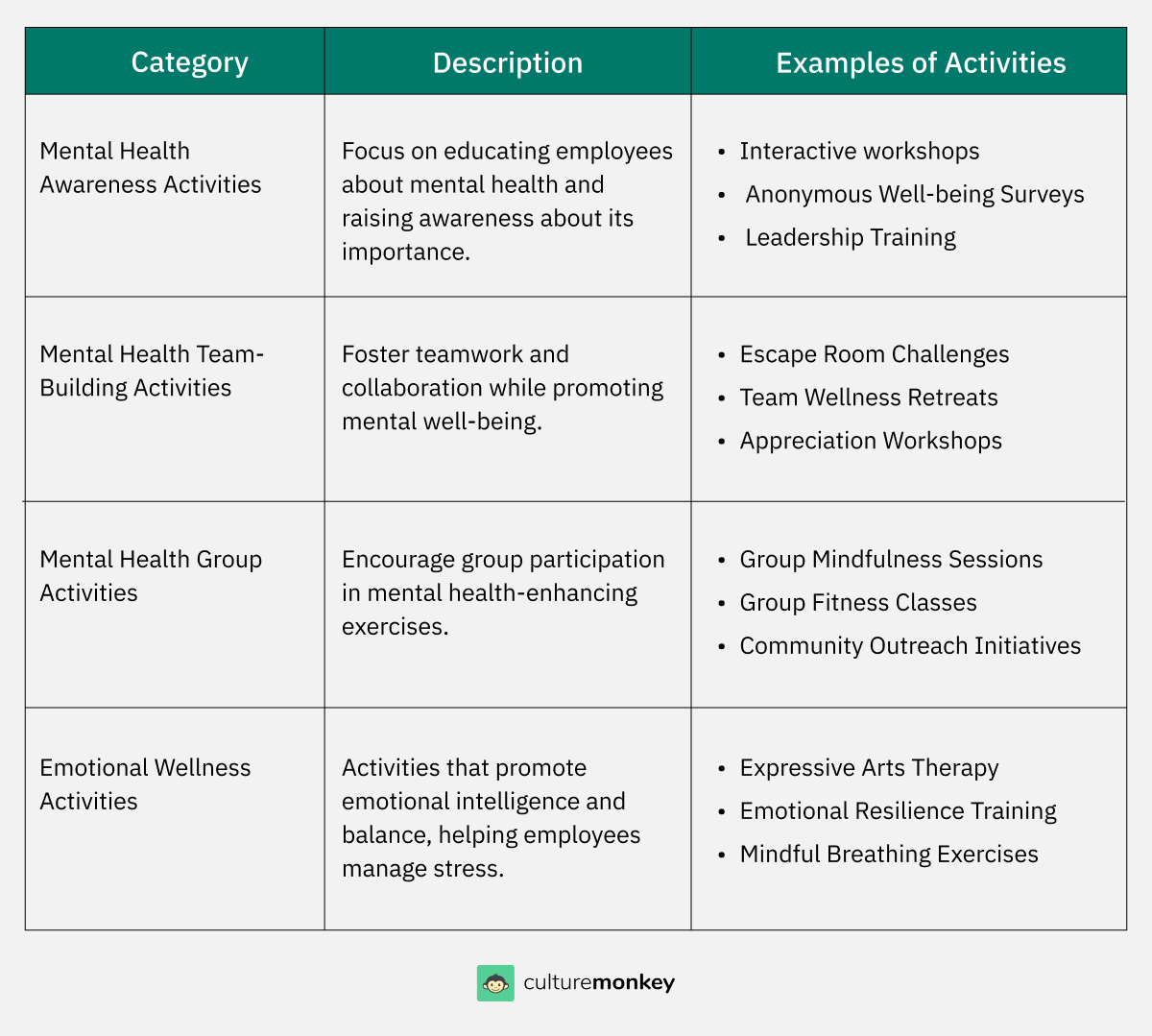
1. Mental health awareness activities at work:
- Interactive workshops on mental health: Conduct informative workshops that delve into the nuances of mental health, covering topics such as stress management, resilience building, and recognizing signs of mental health issues. These workshops create a platform for open discussions, fostering awareness and understanding among employees.
- Employee resource networks: Establish Employee Resource Networks (ERNs) focused on mental health. These networks provide a forum for employees to share experiences, resources, and coping mechanisms, creating a supportive community within the workplace.
- Mental health awareness campaigns: Launch comprehensive awareness campaigns throughout the workplace. Utilize bulletin boards, emails, and internal communication channels to share informative materials, statistics, and success stories. Regular campaigns help normalize conversations around mental health and reduce stigma.
- Anonymous well-being surveys: Implement anonymous well-being surveys to gauge the mental health landscape within the organization. These surveys allow employees to provide feedback on their well-being without fear of judgment, enabling employers to tailor support programs based on specific needs.
- Leadership training on mental health: Provide leadership training programs that equip managers with the skills to recognize and address mental health concerns within their teams. This proactive approach ensures that leaders play a pivotal role in creating a mentally healthy workplace culture.
2. Mental health team building activities:
- Escape room challenges: Organize escape room challenges as team-building activities. These challenges promote collaboration, problem-solving, and effective communication, fostering stronger bonds among team members while providing an enjoyable and mentally engaging experience.
- Team wellness retreats: Plan wellness retreats that combine team-building exercises with activities promoting mental and emotional well-being. These retreats can include mindfulness sessions, outdoor activities, and workshops on stress management, creating a holistic approach to team building.
- Mindful team-building games: Incorporate mindful team-building games that focus on enhancing emotional intelligence and communication skills. Activities such as mindfulness circles or team-based meditation exercises contribute to a positive and cohesive team atmosphere.
- Appreciation workshops: Conduct workshops centered on appreciating diversity and recognizing the unique strengths each team member brings to the table. This not only strengthens team bonds but also fosters an inclusive environment that supports mental well-being.
- Shared leadership projects: Assign shared leadership projects that require team members to collaborate on decision-making and problem-solving. This approach encourages a sense of collective responsibility, promoting a supportive and empowering team dynamic.
3. Mental health group activities:
- Group mindfulness sessions: Schedule regular group mindfulness sessions, led by trained facilitators. These sessions provide an opportunity for employees to collectively engage in relaxation techniques, promoting a shared sense of calm and reducing overall workplace stress.
- Peer-supported stress reduction workshops: Collaborate with mental health professionals to organize workshops focusing on stress reduction techniques. Encourage peer support within these workshops, allowing employees to share coping strategies and build a network of mutual support.
- Book club with mental health themes: Initiate a book club that explores literature with mental health themes. This provides a platform for group discussions, allowing employees to reflect on different perspectives and experiences related to mental health.
- Group fitness classes: Offer group fitness classes that cater to different preferences, such as yoga, pilates, or group walks. Physical activity in a group setting not only contributes to better mental health at work but also enhances a sense of camaraderie among participants.
- Community outreach initiatives: Organize group volunteering activities in the community, emphasizing the positive impact of collective efforts. Engaging in altruistic endeavors as a group promotes a sense of purpose and community, positively influencing mental well-being.
4. Emotional wellness activities:
- Emotional intelligence workshops: Facilitate workshops focused on enhancing emotional intelligence. These workshops equip employees with the skills to understand and manage their emotions effectively, contributing to a healthier emotional well-being.
- Expressive arts therapy: Introduce expressive arts therapy sessions where employees can engage in activities like painting, writing, or music. Creative expression serves as a therapeutic outlet, allowing individuals to process and communicate their emotions.
- Emotional resilience training: Provide training programs that focus on building emotional resilience. These programs teach employees how to navigate challenges, setbacks, and stressors in a way that promotes emotional well-being and mental strength.
- Mindful breathing exercises: Incorporate mindful breathing exercises into the workday routine. Short, guided sessions can help employees manage stress, improve focus, and regulate their emotions, fostering emotional balance.
- Counseling services: Offer access to confidential counseling services for employees facing emotional challenges. Having professional support available demonstrates a commitment to employees' emotional well-being and provides a valuable resource for those in need.
How do you promote mental health in the workplace?
Employers should initiate conversations and educational programs that reduce stigma and help employees recognize signs of mental health issues. This heightened awareness of mental health stigma encourages individuals to seek help when needed and fosters a more empathetic atmosphere.
Access to mental health resources is equally important. Employee Assistance Programs (EAPs), counseling services, and access to mental health professionals should be readily available. Ensuring employees know how to access these resources confidentially empowers them to take control of their mental well-being.
To make all these possible, effective communication and support are foundational. A workplace culture that encourages open dialogue and enables employees to discuss their mental health concerns with managers or HR promotes trust and transparency. Training managers to recognize and address mental health issues ensures employees receive necessary support and accommodations.
How do I run a mental health workshop at work? And how does employee engagement survey help?
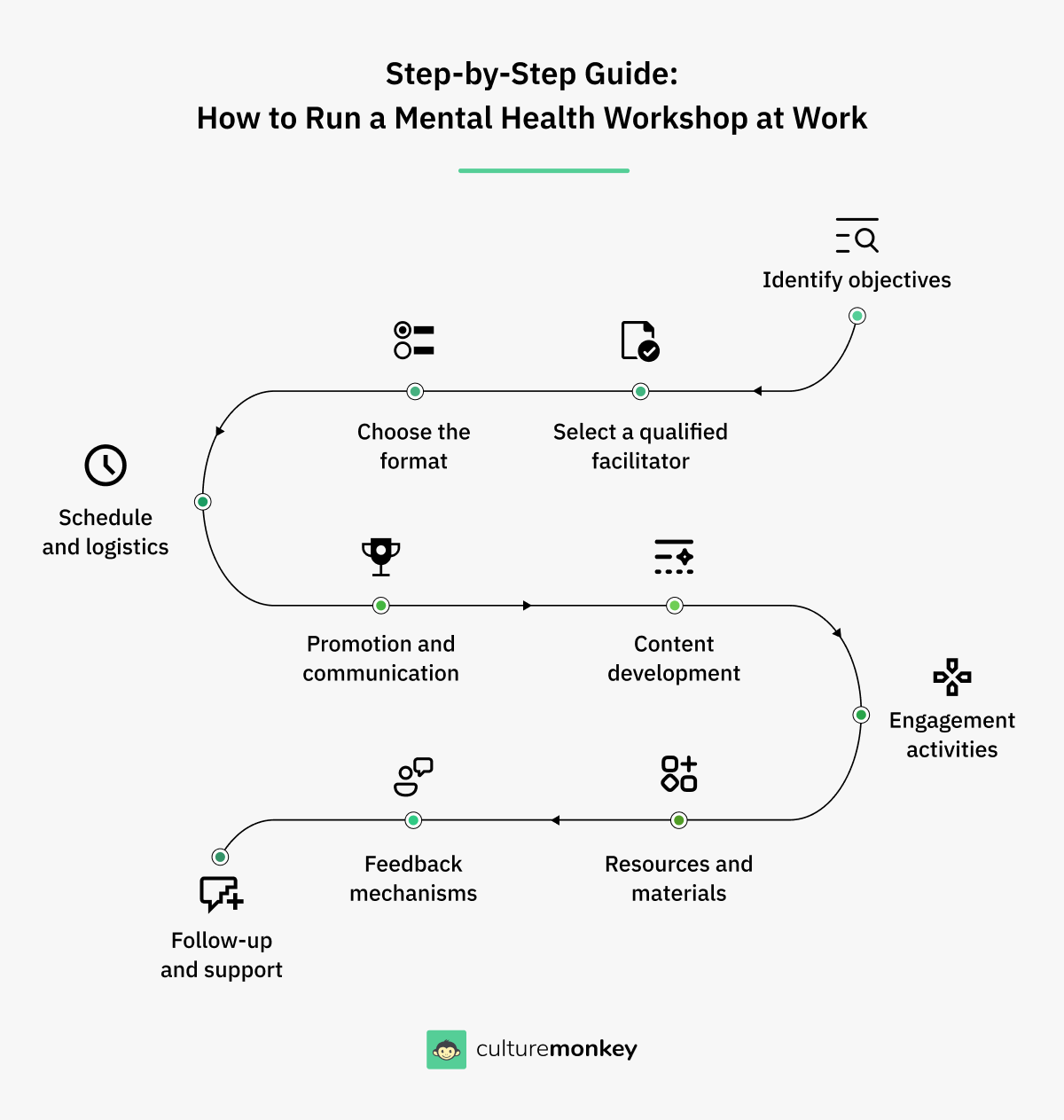
Running a mental health workshop at work requires careful planning and consideration. Here's a step-by-step guide on how to conduct such a workshop effectively:
- Identify objectives: Determine the specific goals of your workshop. Are you focusing on stress management, building resilience, or addressing a particular aspect of mental health? Clearly defined objectives will guide the content and structure of the workshop.
- Select a qualified facilitator: Consider hiring a mental health professional, counselor, or trainer with expertise in the workshop's topic. Their knowledge and experience can ensure the workshop's effectiveness.
- Choose the format: Decide on the workshop format. Depending on your organization's needs and preferences, it can be a one-time event, a series of sessions, or a combination of in-person and virtual sessions.
- Schedule and logistics: Set a date and time that accommodates the majority of your employees. Ensure you have an appropriate venue and necessary audiovisual equipment for presentations.
- Promotion and communication: Promote the workshop well in advance to generate interest and participation. Use various communication channels such as emails, posters, and intranet announcements to reach all employees.
- Content development: Collaborate with your facilitator to develop engaging and informative content. Include interactive activities, real-life examples, and practical strategies that employees can apply in their daily lives.
- Engagement activities: Incorporate group discussions, role-playing, and interactive exercises to keep participants engaged and encourage open dialogue.
- Resources and materials: Provide handouts, resources, or recommended readings to participants to reinforce key concepts and encourage further learning.
- Feedback mechanisms: Create opportunities for participants to provide feedback during and after the workshop. Use this feedback to improve future workshops.
- Follow-up and support: After the workshop, offer ongoing support through follow-up emails, resources, or access to mental health services. Encourage participants to implement what they've learned.
After you conduct a mental health workshop, it is important to assess its impact, and that’s where employee mental health surveys come in. These surveys can gauge employee satisfaction, stress levels, and perceptions of mental health support.

20 Mental Health Survey Questions
By addressing mental health concerns, companies can foster a supportive work environment, boost productivity, reduce absenteeism, and enhance employee engagement.
The data collected helps you identify improvement areas, measure your programs' effectiveness, and make data-driven decisions to support your workforce's mental health better.
Regular pulse surveys also demonstrate your organization's commitment to employee well-being, fostering a culture of trust and transparency. By understanding your employees' needs and concerns through these surveys, you can tailor your mental health initiatives to create a more supportive and mentally healthy workplace.
Summary
Taking care of mental health at work is essential for both individual well-being and organizational success. Incorporating mental health activities like guided meditation, wellness challenges, and stress reduction programs fosters a supportive, productive environment.
A mentally healthy workplace reduces absenteeism, boosts engagement, and enhances creativity, leading to a positive company culture. By prioritizing mental health through awareness, support services, and employee wellness programs, organizations can create a more resilient and satisfied workforce.
Conclusion
Prioritizing mental health in the workplace is not just an option but a necessity for both employees and organizations. Creating a mentally healthy environment involves awareness, access to resources, open communication, and a commitment to fostering well-being.
Employers can contribute to a happier, healthier, and more engaged workforce by implementing mental health programs, workshops, and engagement surveys. Doing so improves individual well-being and enhances productivity and job satisfaction. Mental health isn't just an individual responsibility; it's a collective effort that benefits everyone involved.



